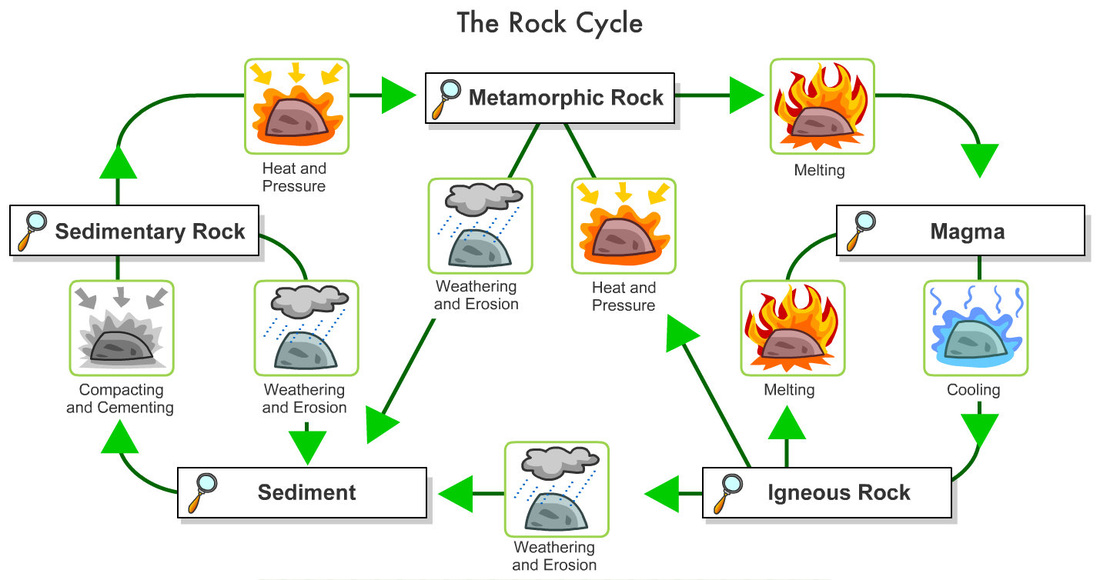Igneous Rocks, Sedimentary Rocks, Metamorphic Rocks
Rocks [arr] Material that form crust of earth
Igneous Rocks
- Formed through cooling & solidification of molten material magma ( Erupted from volcanoes, molten material moves towards surface of earth through crack)
- Normally crystalline in structure, do not occur in strata & do not contains fossils
- Can be subdivided on the basis of mineral composition
- Basic rocks contain high proportion of basic oxides mainly of iron, aluminium & magnesium
- When they contain high proportion of silica, they are said to be acidic, which are less dense & lighter in color than basic rocks for ex. Granite
- Most igneous rocks are extremely hard & resistant hence are quarried for road making & polished as monuments & grave stones
- Are parent / primary rocks as all other rocks are derived from it.
In terms of origin they can be divided into mainly 2 classes viz.
| Plutonic Rocks |
|
| Volcanic Rocks |
|
Sedimentary Rocks
- Formed due to deposition of layers of sediment usually along the water bodies over a long period of time
- Sediment is deposited layer by layer in form of strata hence also known as stratified rocks
- Process of turning sediments into hard rock layers by pressure is known as lithification
- Rocks may be fine grained or coarse, soft or hard & material forming them may be brought by streams, glaciers, winds or even animals
- May be derived from Igneous, Metamorphic or Sedimentary rocks
- Hence, Sedimentary rocks are most varied in formation of all rocks
- They are non-crystalline & often contains fossils of animals, plants & other microorganisms
May be classified under 3 categories with respect to their origin & composition viz
| Mechanically formed |
|
| Organically formed |
|
| Chemically formed |
|
Metamorphic Rocks
- Formed when original structure of igneous & sedimentary rocks partially or wholly changes under the action of heat & pressure
- Contains no fossils
- No stratification
- For ex. Clay [arr] Slate
Igneous to Metamorphic
|
Sedimentary to Metamorphic
|












3 comments
thankyou very much to share the knowledge.
good
gdgfdsz